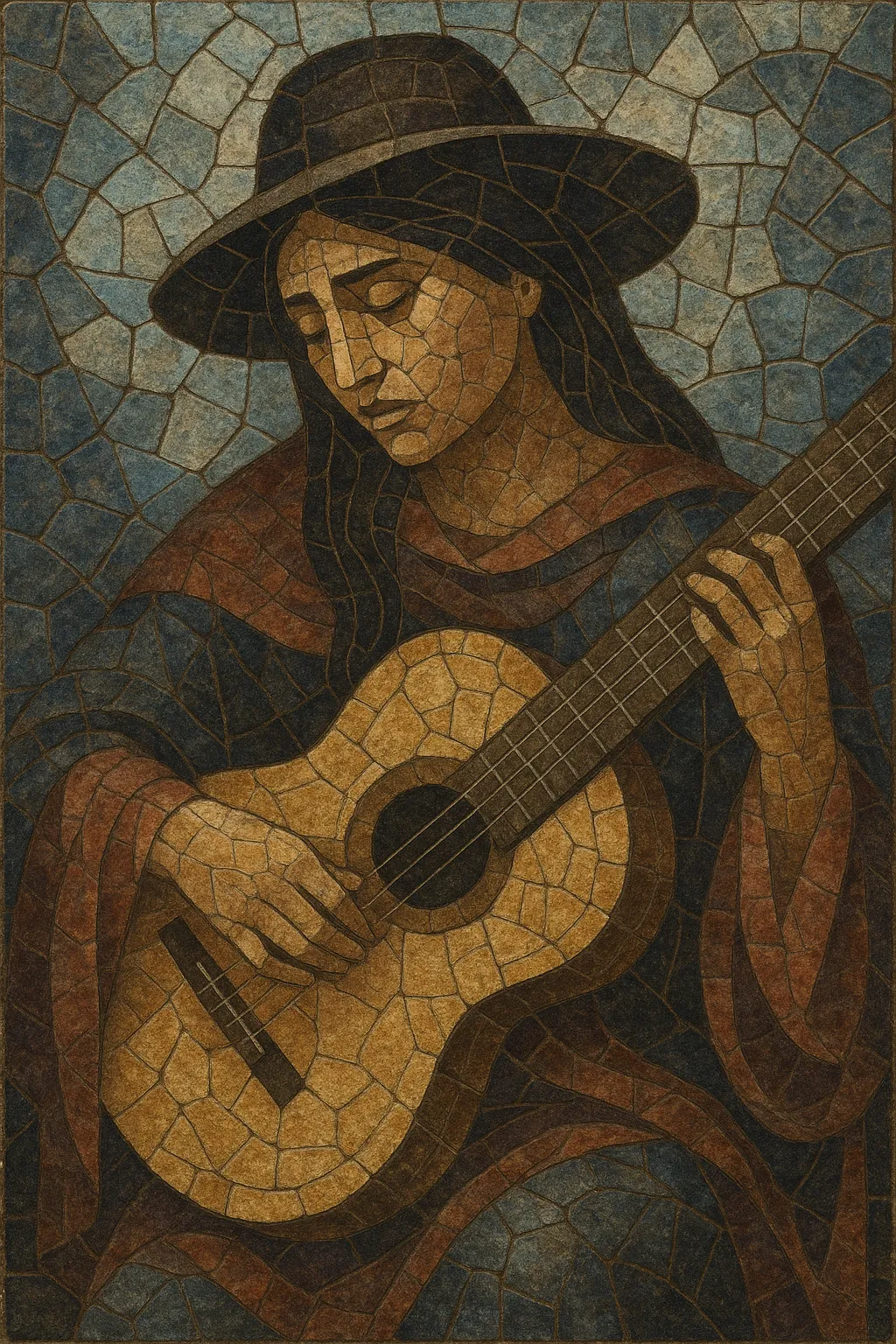Yaraví is a slow, mournful Andean song form that emerged in colonial Peru as a mestizo transformation of the pre‑Hispanic Quechua harawi filtered through Spanish romance and art‑song aesthetics.
It is typically sung in an intimate style with flexible, rubato phrasing, minor or modal harmony, and strophic verses (often quatrains of octosyllabic lines) in Spanish or Quechua. Accompaniment is usually a single guitar, sometimes joined by Andean harp, charango, or violin, with arpeggiated textures that support a plaintive vocal line.
The texts revolve around unrequited love, absence, fate, homesickness, and existential melancholy, making yaraví one of the most emotive and introspective genres of the southern Andean world.
Yaraví took shape in colonial Peru as a creole reinterpretation of the Quechua harawi, adopting the strophic poetry and melodic sensitivity of Spanish romance and salon art song. In Arequipa and the southern highlands, it crystallized as a distinctive lament. The poet Mariano Melgar (1790–1815) helped codify its lyrical spirit in his celebrated "yaravíes," which were widely sung and set to music.
Through urban salons, printed songbooks, and itinerant guitarists, yaraví spread across Peru and into neighboring Andean regions. The genre’s slow tempo, minor‑mode melodies, and rubato delivery became emblematic of Andean sentimentality. Guitar and Andean harp accompaniments standardized an arpeggiated, intimate texture.
In Ecuador, the yaraví repertoire intertwined with local practices and later fed the development of the pasillo, which fused European waltz rhythm with Andean melodic melancholy. In Peru, yaraví remained closely associated with Arequipa and the southern sierra, coexisting with harawi and huayno while retaining its distinctively plaintive character.
Early recordings and radio broadcasts helped preserve notable yaraví performances and arrangements in both Peru and Ecuador. Cultural revivalists, duos, and soloists kept the repertoire alive, while scholars collected versions in Quechua and Spanish. Today yaraví is performed in concerts, serenades, and cultural festivals, and its expressive vocabulary continues to inform contemporary Andean singer‑songwriters and heritage projects.
Write a vocal line in a minor or modal tonality (Aeolian or Dorian are common), favoring stepwise motion, expressive appoggiaturas, and occasional melismas. Use rubato to allow phrases to breathe and heighten the sense of lament.
Accompany with sparse, arpeggiated chords on guitar (or Andean harp/charango). Typical cadential motion includes i–VII–VI–V or i–iv–V–i in minor, with modal color tones (flat 7 in Dorian) and sensitive leading tones sparingly emphasized.
Keep the tempo slow (adagio/andante) and employ flexible phrasing rather than strict meter. Even when notated in 2/4 or 3/4, performance should feel elastic, with rallentandi, fermatas, and breath‑led entrances.
Use a strophic form with quatrains (often octosyllabic lines) and assonant rhyme, drawing on themes of unrequited love, distance, fate, and longing. Write in Spanish or Quechua, with vivid imagery of mountains, night, and memory.
Aim for an intimate, close‑to‑the‑ear vocal timbre. Duos may add parallel thirds or sixths for brief moments of harmonic bloom. Ornamentations should be tasteful and serve the text, not virtuosity.
Begin with a short instrumental introduction outlining the mode. Let the singer lead subtle tempo shifts, and end phrases with gentle decays rather than sharp cutoffs to preserve the reflective mood.


